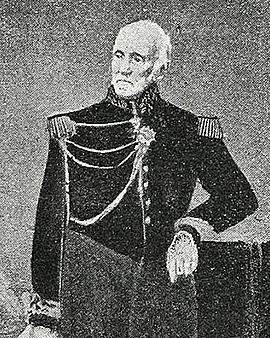Immerse yourself in the multifaceted world of Jean-Charles Langlois, whose life and work as an artist and soldier were inextricably intertwined. Born July 22, 1789, in Beaumont-en-Auge and known as "Le Colonel," Langlois was more than just a remarkable French officer. His artistic skills manifested themselves on the battlefield and in painting, and he additionally earned the title of a pioneer of photography. His journey began in 1806 as a recent graduate of the École polytechnique, a prestigious military academy. His life as an officer was marked by wars, beginning with the Dalmatian Campaign of 1809, through the Russian Campaign of 1812, to the Wars of Liberation and finally the French invasion of Spain in 1823. He received his promotion to captain on the brutal battlefield of Waterloo in 1815, where he was severely wounded. Despite the physical scars he bore on the battlefield, Langlois developed a unique skill: he gave life and depth to relentless battles through his artistic abilities.
Langlois, who was placed on half-salary during the French Restoration, used his newfound time to pursue his growing passion for drawing and painting. He moved to Paris in 1817 and became a student of Antoine Jean Gros, Horace, Vernet, and Anne Louis Girodet Trioson, all established painters of their day. But painting was not the only medium Langlois used to record his experiences and observations. After making a series of impressive sketches in Algeria, he created his fascinating Panorama of Algiers in 1836. This masterpiece and many others of his works, from the battles of Napoleon's Egyptian campaign to the French campaign in Spain, have found their way into the living and working spaces of numerous art lovers as inspirational art prints. During his trip to Egypt in 1850, Langlois met Maxime Du Camp, a French writer, journalist and photographer. This encounter led Langlois to discover photography for himself and to begin using this relatively new art form to document the Crimean War. Together with the young photographer Leon Eugéne Méhédin, he visited the battlefields of the Crimean War and created photographic images there for his panoramic painting of Sevastopol. These works, exhibited between 1860 and 1865 in a rotunda built by Gabriel Jean Antoine Davioud at the traffic circle of the Champs Elysées in Paris.
×





.jpg)
.jpg)
 - (MeisterDrucke-89072).jpg)
 - (MeisterDrucke-89072).jpg)
.jpg)
.jpg)
.jpg)
.jpg)
 - (MeisterDrucke-54705).jpg)
 - (MeisterDrucke-54705).jpg)
 - (MeisterDrucke-65155).jpg)
 - (MeisterDrucke-65155).jpg)
.jpg)
.jpg)
.jpg)
.jpg)
.jpg)
.jpg)
.jpg)
.jpg)
 - (MeisterDrucke-143078).jpg)
 - (MeisterDrucke-143078).jpg)
_The_General_House_receives_the_surrender_of_-_(MeisterDrucke-1004779).jpg)
_The_General_House_receives_the_surrender_of_-_(MeisterDrucke-1004779).jpg)
_1838_-_(MeisterDrucke-951668).jpg)
_1838_-_(MeisterDrucke-951668).jpg)
 and Ibrahim Pasha (1789-1848) at Navarino September 1828 1838 - (MeisterDrucke-92570).jpg)
 and Ibrahim Pasha (1789-1848) at Navarino September 1828 1838 - (MeisterDrucke-92570).jpg)
 1839 - (MeisterDrucke-110848).jpg)
 1839 - (MeisterDrucke-110848).jpg)
.jpg)
.jpg)
_-_(MeisterDrucke-974899).jpg)
_-_(MeisterDrucke-974899).jpg)
.jpg)
.jpg)
.jpg)
.jpg)
_-_(MeisterDrucke-1514219).jpg)
_-_(MeisterDrucke-1514219).jpg)
.jpg)
.jpg)
.jpg)
.jpg)
.jpg)
.jpg)






